m (→Notes and Comments Summary: clarify when to add decyl glucoside) Tag: rte-wysiwyg |
(Adding categories) Tag: categoryselect |
||
| Line 83: | Line 83: | ||
[[Category:DIY]] |
[[Category:DIY]] |
||
[[Category:Detergent]] |
[[Category:Detergent]] |
||
| + | [[Category:RAD]] |
||
Revision as of 18:27, 17 April 2017
RAD - Rick's Alternative Detergent
Rick Findley has been working on creating a safe eco-friendly surfactant mix for making bubbles and is sharing the recipe. Give it a try, and if you you succeed in creating an improved version, please share.
Rick is sharing this recipe with the understanding that if you make use of it that you will share any improvements with the community and will not keep your improvements secret. He has put in a great deal of research and experimentation to come up with this recipe and is sharing it with the hope that his good will will be returned by all that use it.
RAD 1.0 (Oct. 2016 Version)
by Rick Findley, 7 Oct 2016
This is an experimental mixing procedure and recipe which means there are undoubtedly improvements that can and will be made in the future--but for now this has proven to work.
I would like to make it clear that the whole purpose of RAD is to develope a simple DIY (and completely safe) alternative to commercial detergents. There is more testing and experimenting still to be done. The base recipe I came up with is very productive and promising. Competing with, or comparisons to, other products or recipes is premature. I am hoping that once RAD becomes broadly known other bubblers will join the "crusade" and help develop an alternative system that changes the game as we know it.
This is not a commercial grade product as I did not formulate it in a laboratory setting. I did not use distilled water nor did I sterilize my equipment or add any preservative--if I had done all these things it may have possibly extended the shelf life in a concentrated form. As it stands there has been no long term testing to establish stability, shelf life or degradation.
Ingredients
- Cocamidopropyl Betaine (CAPB) * (liquid)
- Sodium Lauryl Sulfoacetate (SLSA) * (IMPORTANT! This is a fine powder that is an irritant if breathed in. Care should be taken not to breathe it in. It is generally advised to wear a dust mask when handling it.)
- Water
- JLube (other polymers work also)
* - These ingredients are listed as non-toxic, eco friendly, non-irritants and are bio-degradable.
Materials
- Microwave oven **
- 2-4 cup capacity micro safe container (you need a container with 2X the capacity of the amount you are putting into it).
- Wooden stir stick (chop stick or popcycle stick, etc.)
- Digital scale and pH meter
Recipe
Makes 500 ml of concentrate and 1 liter diluted juice. This recipe scales up well. To make a larger batch, multiply all amounts accordingly.
Rick notes that it takes 2 minutes to boil water in his microwave to boil 1 cup of water (250ml): ADJUST YOUR HEATING TIMES ACCORDINGLY!
If you do not have a microwave oven you can add 250ml water to a small pot and gradually heat to below boiling while you stir in the powder ingredients.
THE CONCENTRATE
- Weigh 14 grams SLSA. Take care not to get the powder airborne as it is an irritant if breathed in. A dust mask is advisable.
- Weigh 5 grams CAPB
- Weigh .3g JLube
- Add 250 ml of tap water to a 2 cup capacity Pyrex measuring cup.
- Sprinkle in your Jlube while stirring.
- Place Pyrex container in Micro for 1 minute--keep your wooden stir stick in the container while it is heating in the micro.
- Remove from micro and sprinkle in your SLSA while stirring Note: SLSA will not dissolve until heated.
- Place into Micro once again for 1 minute.
- Remove from Micro and stir into a vortex for 1 minute. Solution with dissolve fully and turn clear after stirring.
- Add 250 ml more water (room temperature) Stir in CAPB
DILUTING
The recipe above makes a concentrate. To use it as bubble juice:
- Add 500ml water to the concentrate.
- Adjust pH to 7.4--7.6 using citric acid and baking soda.
Usage Note: Although this recipe will produce good results immediately after mixing, it does seem to produce better after waiting.
Notes and Comments Summary
Decyl Glucoside: March 2017. Rick notes (see comments section below) that adding 3 grams of decyl glucoside (a non-ionic surfactant) just after step 9 makes a noticeable difference.
RAD In Action
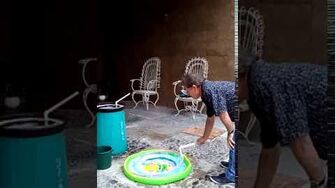
ECO AND KID FRIENDLY, BUBBLE EXPERIMENT by Rick Findley
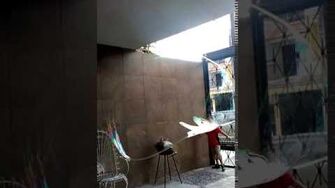
Testing Rick's Alternative Detergent (RAD) by Rick Findley
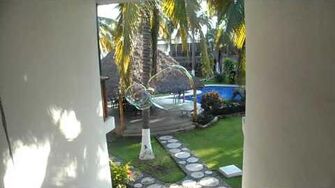
RIck's Alternative Detergent (RAD) by rick findley
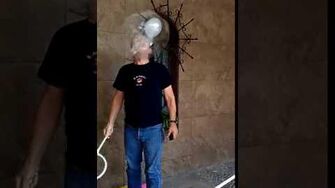
Testing Rick's Alternative Detergent (RAD)
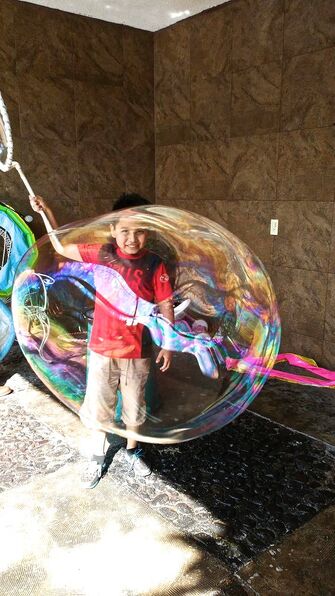
Sourcing Ingredients
The surfactants used are available through stores that cater to home lotion and soapmakers. They are easily found on EBay.
Editor's Note
RAD is a great recipe and early in its development. You will have a lot of fun with it. This may not (yet) compete with what can be done with Dawn in terms of size, but it is a much more kid-friendly mix that can make great bubbles, and we hope that over time it will develop into a formulation that will give Dawn-based solutions a run for their money.
Please share your RAD pictures and videos with us!